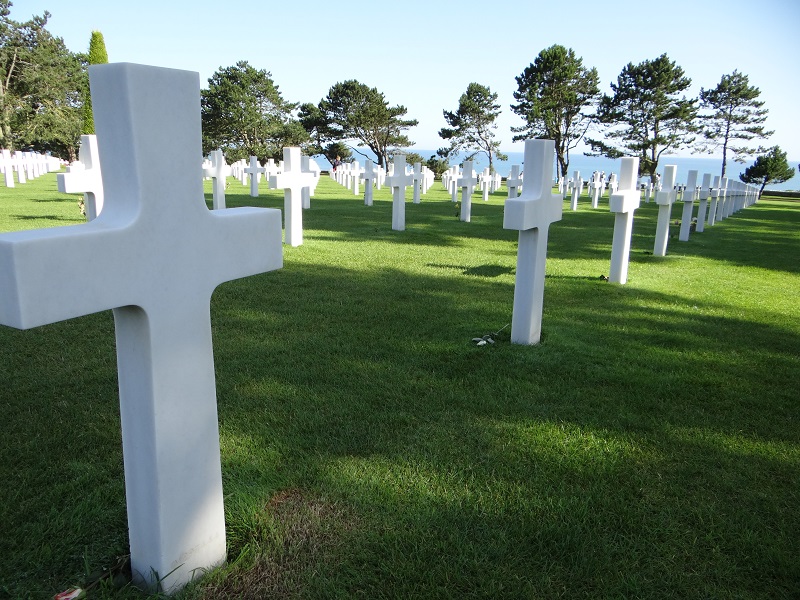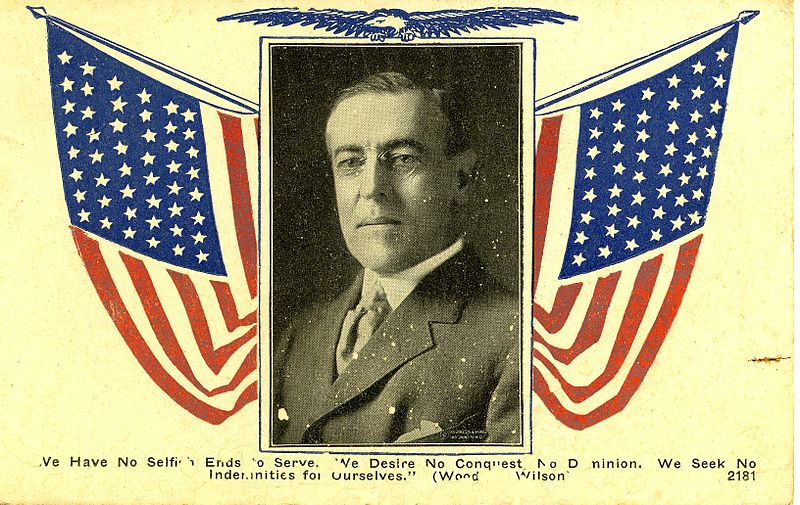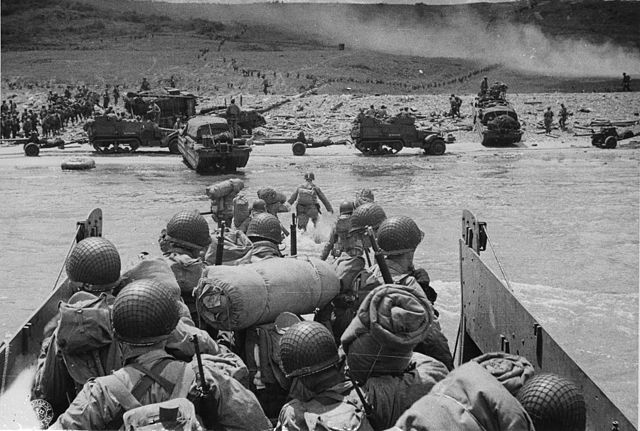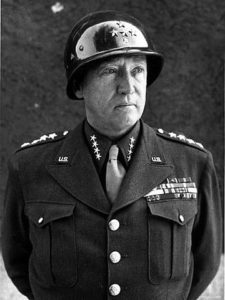Multiple American cemeteries in Europe can be visited in a day trip. This 5 hour round-trip tour takes you to three WWI & WWII cemetries in southern Luxembourg and eastern France. There are many sites to see in the area, so you may want to plan for extra time based in Luxembourg and Verdun.
It is a very moving experience to visit military cemeteries and reflect on the sacrifice and valor so many have exhibited for our freedom. The American Battle Monuments Commission meticulously maintain these sites around the world, several of which in Europe honor those who served in World War One and World War Two.
By the end of WWI, more than 50,000 American soldiers had been killed and 4 times as many were wounded. Most of these soldiers are buried in American cemeteries in Europe, a majority of them in France. Families in the US wanted their relatives brought back to the US. However, the logistics to identify, prepare and ship that many bodies was just not possible, as France was focused on their own reconstruction from the devastation of the war. Eventually, in the 1920’s, France did lift the ban on repatriating the bodies and many were returned to the US, but over 30,000 remain in Europe.
US casualty rates in WWII were significantly higher, with more than 400,000 deaths and nearly 700,000 wounded. More than 70,000 soldiers from WWII are buried in American cemeteries in Europe.
Already have a good sense of how & why the US got involved in the World Wars? Then bypass the historical primer and Skip to the Trip!
Why did the US get involved in WWI?
A Position of Neutrality Could Not Last
Though WWI began in Europe in 1914 and quickly pulled in countries all over the world, the United States maintained a position of neutrality for much of the conflict. In fact, President Woodrow Wilson famously campaigned in 1916 on the fact that he kept the US out of the war. It paid off, and he won a narrow victory for a second term.
Despite this, US neutrality, which was pretty openly supportive of the Allies, was not to last.
Following Germany’s sinking of the British ship Lusitania in May 1915, killing 128 American passengers and many more British. Germany backed off U-boat attacks following the outrage over sinking a passenger ship – which may have been transporting weapons as they claimed. However, they resumed unrestricted submarine warfare 2 years later, leading to more American lives lost on merchant and passenger ships.
Around the same time, British intelligence intercepted a telegram Germany had sent to Mexico offering the US to Mexico should they join in the fight and attack the US. News of the telegram went public and US involvement in the war was inevitable.

American Soldiers "Won't Come Home "Til it's Over Over There"
George Cohen wrote a number of patriotic songs that were popular during WWI and again for WWII. MDTT Tip: Making a playlist of songs from the time period you’re visiting adds another great layer to your trip. I’m always adding to the list, but these are some of my favorites!
On April 6, 1917 Congress approved Wilson’s declaration of War and the US was officially a combatant. With less than 500 machine guns, no tanks, no steel helmets and no gas masks, the US industrial machine lurched into gear. More specifically, domestic industries were converted to wartime production and supporting a growing army.
WWI marked the first time the United States had sent forces overseas to defend foreign land. Within a year, the US had a military force of nearly 4 million men and women with 2 million serving at the Western Front in Europe.
Why did the US get invovled in WWII?
A Day that Will Live in Infamy
Though the start of WWII is generally associated with Europe, it was Japan that brought the US into the conflict. Japan had been vying for dominance in Asia with the US and other European powers for decades, and the attack on Pearl Harbor in Hawaii on December 7, 1941 was a pre-emptive attack by Japan to prevent US retaliation to their expansionist plans for Asia. Immediately following the attack on Pearl Harbor, Japan also attacked US and British bases in the Philippines, Guam, Midway Island, and more, seizing control of the Pacific.
The day following the attack, the US declared war on Japan. In turn, Japan’s allies, Germany and Italy, declared war on the US and our involvement in the global conflict began.
US troops arrive in Europe
WWII began in Europe on September 1, 1939 when Germany invaded Poland, though Hitler had started occupying parts of Austria and Czechoslovakia over the past year. American troops arrived in Britain in January 1942, but spent most of the year training before ground troops went in. The US Air Force went into combat sooner, on the 4th of July, 1942 the first American crews participated in the first joint combat mission with the British Royal Air Force.
US troops first engaged the Axis forces in northern Africa and the Mediterranean throughout 1942/43. Meanwhile, planning was underway for a full-scale invasion of Western Europe. Operation Overlord began overnight on June 6, 1944 on the beaches of Normandy.
What followed were engagements that have become synonymous with heroism and sacrifice: D-Day, Operation Market Garden, The Battle of the Bulge, The Battle of Remagen and more. By May, 1945, Germany surrendered and VE Day (Victory in Europe) was declared on the 8th of May. Fighting continued in the Pacific until September when the war finally came to an end.

Luxembourg American Cemetery
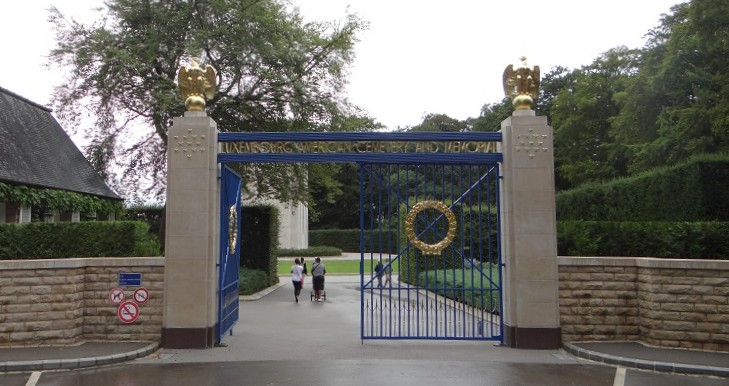
This tour of American cemeteries in Europe starts in Luxembourg with the Luxembourg American Cemetery.
To the left of the entrance is a visitor’s center, where you can find information about the site. Directly ahead of the entrance is the Memorial Chapel, which has a beautiful mosaic ceiling and colorful stained glass windows designed around the Army insignia.
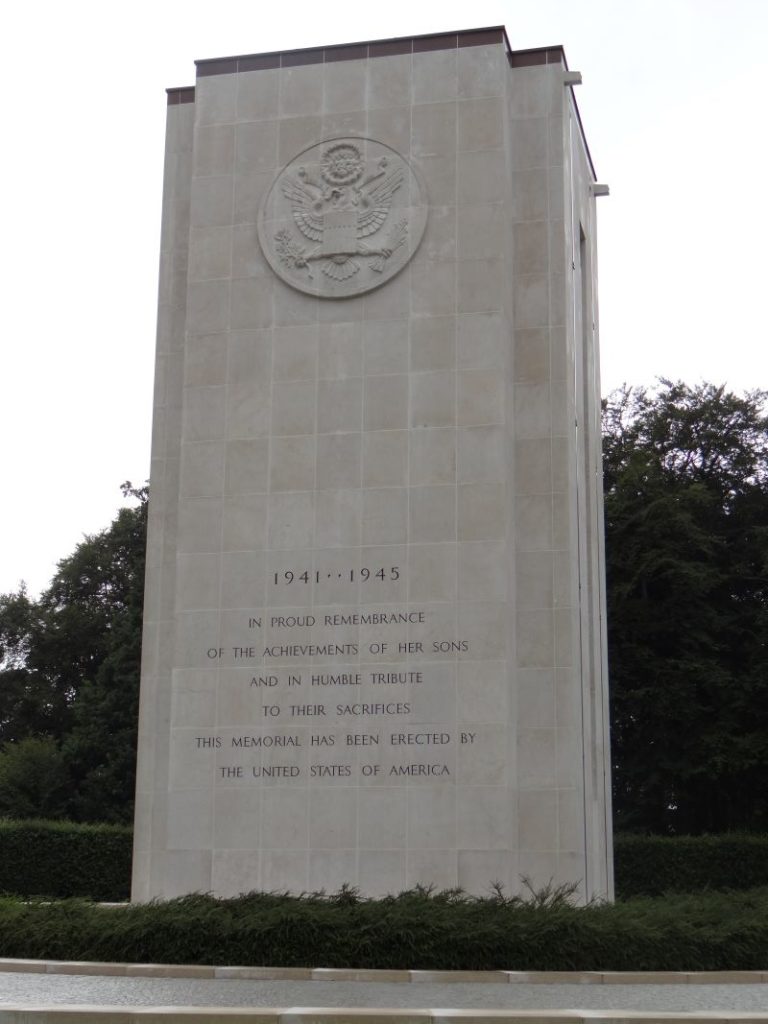
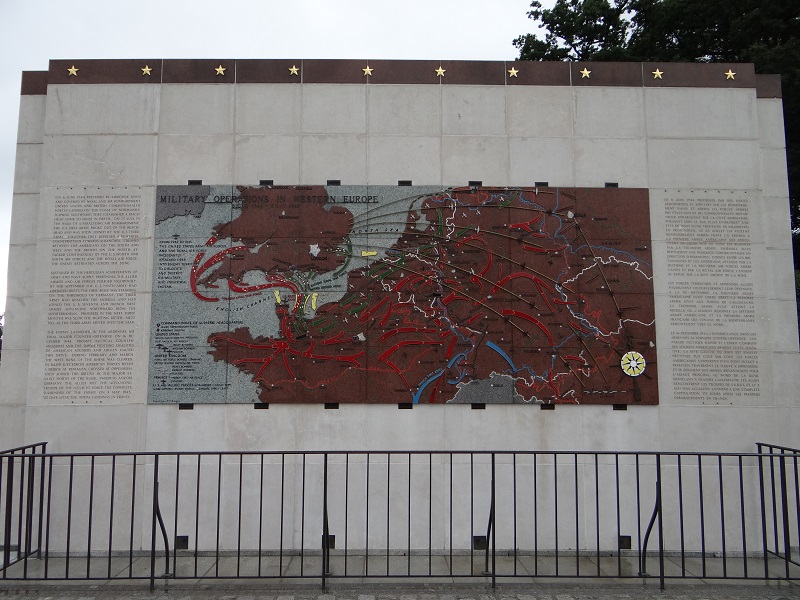
Germany's last major counteroffensive of WWII
In December 1944, Germany surrounded US troops in Bastogne, Belgium (about an hour northwest of the cemetery) and demanded a surrender, to which Brig. Gen. McAuliffe famously replied “Nuts!”. Troops held firm, cut off from supplies for several days before Patton’s Third Army broke through German defenses and the Allied push into Germany began.
The Luxembourg American Cemetery was established in December of 1944 while Allied forces continued their operations in the Ardennes. Patton’s Third Army was headquartered in the nearby city of Luxembourg, and there is an excellent Patton museum in town that is well worth a visit. 5.070 service members are interred in this cemetery, many of whom who lost their lives in the Battle of the Bulge and push towards the Rhine River.
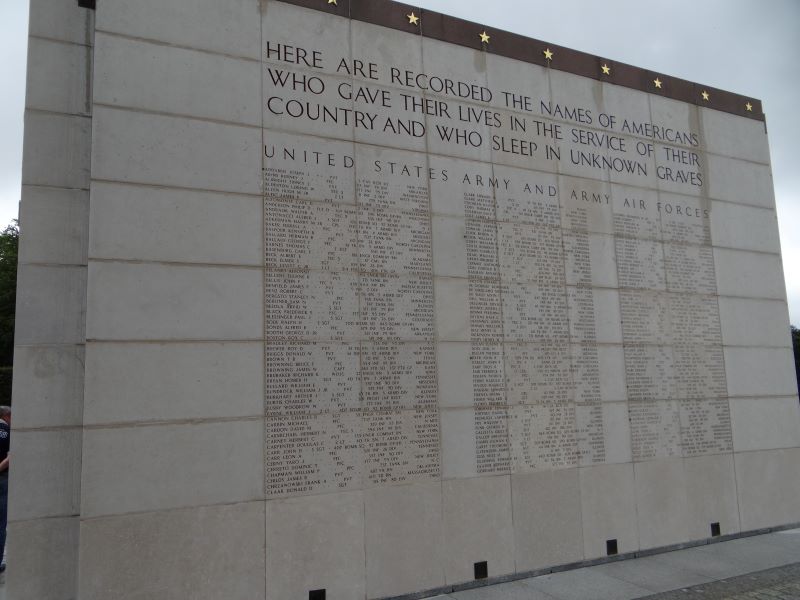
Near the chapel are two large displays that show the battle movements of Western European offensives and, specifically, the Battle of the Bulge.
Nearly 400 names of those missing in action are also listed, 23 were eventually recovered and buried in marked graves – their names are marked with a bronze rosette.
Visit Gen. George S. Patton's Grave
George Patton has been described as one of the greatest military leaders the US has ever had, with a long and storied career and a passion for military strategy. Despite the fighting he survived through WWI and II, a car accident in Germany on December 9, 1945 broke his neck and left him completely paralyzed. 12 days after the accident, a blood clot stopped his heart and he died at a military hospital in Heidelberg.
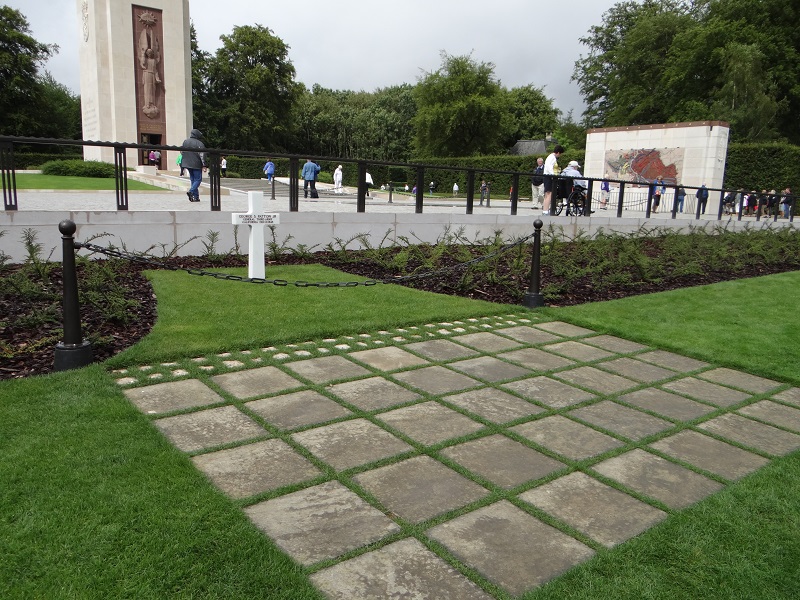
Patton’s widow originally planned to return his body to the US for burial, and the French government offered to bury him in Napoleons’ tomb with other great military commanders. It was a suggestion from one of his deputy commanders to bury him in a military cemetery in France. His widow agreed that he would have wanted to be with his fallen men and the Luxembourg American Cemetery was chosen for his final resting place.
Lorraine American Cemetery

Stone and ceramic operations maps help tell the narrative of the fighting in the region at the memorial building which rises high over the graves.
A figure of St. Nabor, a martyred Roman soldier, can be found on the exterior of the memorial building, extending his hand in a blessing over those resting here.
Largest WWII American cemetery in Europe
About an hour drive to the southeast of Luxembourg is the Lorraine American Cemetery, the largest WWII American cemetery in Europe. Located in St. Avold, France, most of the casualties here came from the battle to drive the Germans out of the town of Metz, France, back into Germany.
More than 16,000 were originally interred in the region and more than 10,000 remain today. Another 444 names are inscribed on the Walls of the Missing.
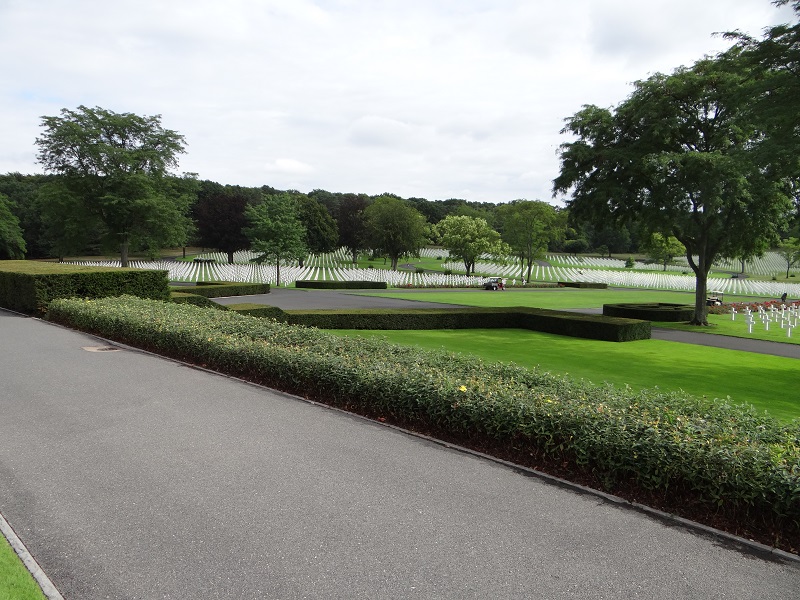
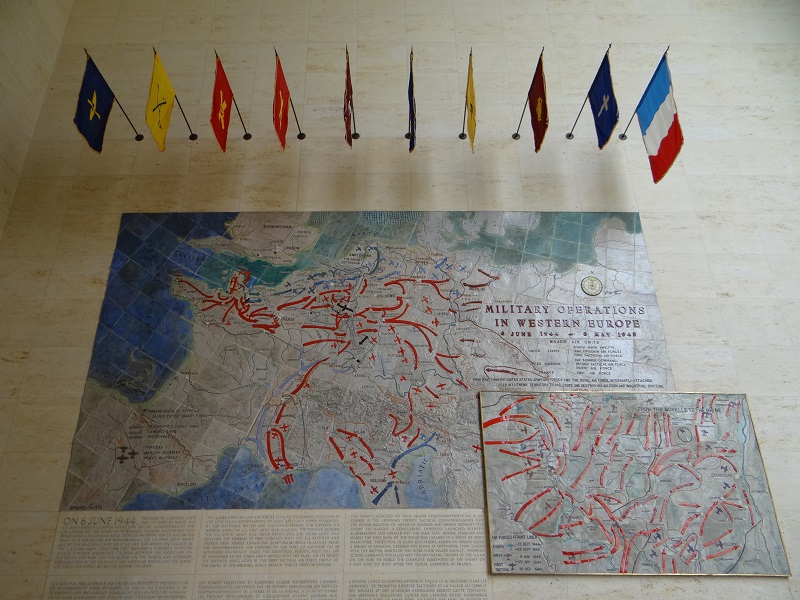

The Third US Army pursued German forces across eastern France in September of 1944. They eventually met up with the Seventh US Army and French First Army coming up from southern France. By November, Metz and St. Avold were liberated following heavy fighting and the Third Army moved northward to provide a counter attack during the Battle of the Bulge. Fighting in the region continued through the beginning of 1945, until Germany surrendered in May.
The figures in the chapel represent the struggle for freedom: King David, Emperor Constantine, King Arthur and George Washington support the youthful figure in the center.
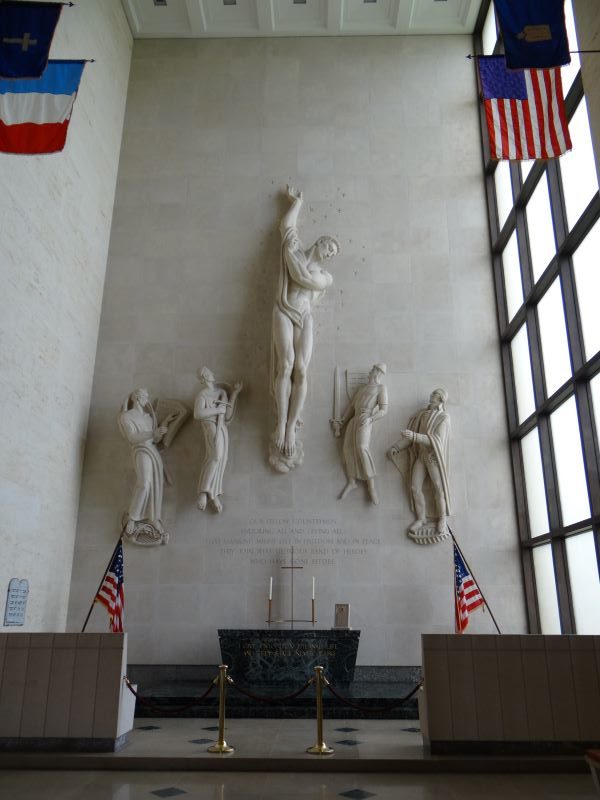
Meuse-Argonne American Cemetery
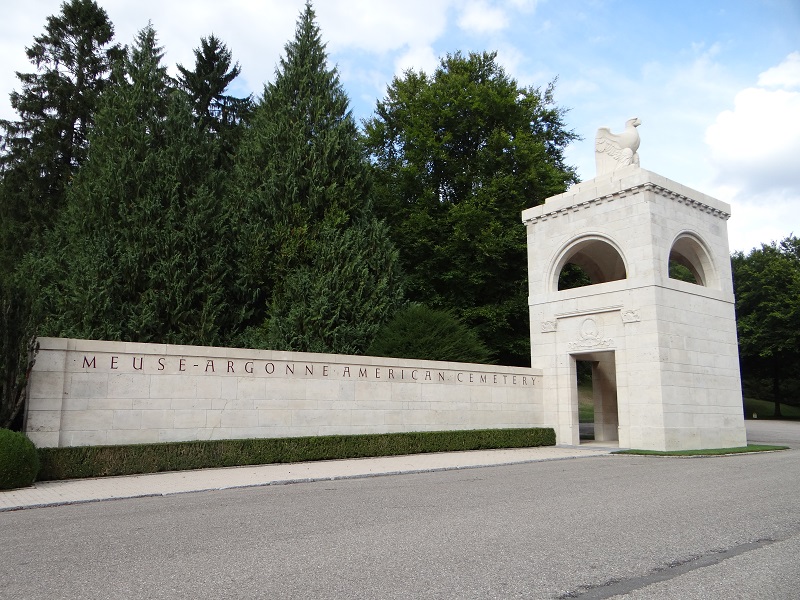
Largest American cemetery in Europe
The Meuse-Argonne Cemetery is the largest American cemetery in Europe. More than 14,000 are buried in this 130 acre cemetery.
Muse-Argonne is located where American troops joined with the French Fourth Army to launch the largest operation we fought in World War One. More than 1.2 million US soldiers were engaged in the battle; more than 117,000 were killed or wounded during the 7 weeks of fighting.
The battle raged from September 26 to November 11, 1918, when Germany finally agreed to an armistice and the war ended. The most painful part of the cemetery is to see the tombstones of soliders who died so close to the end of the war.
The armistice was signed early in the morning of November 11, but the agreement was that hostilities would cease at 11am — the 11th hour of the 11th day of the 11th month.
This may be poetic, but it also meant hundreds (some estimates are closer to 2500) would die in the final hours of a war that was already over.



I visited in 2015, and the visitor center was closed for renovations, so I can’t speak to it specifically but based on other sites managed by the ABMC that I have visited, I have no doubt it is fantastic and well done.
As with other American cemeteries in Europe managed by the ABMC, the chapel commemorates the 954 names of the missing who were never recovered. There is also a map of the Meuse-Argonne Offensive to with troop movements and battle details.
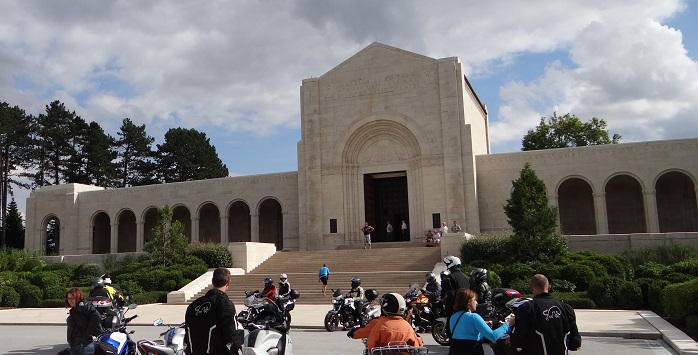
Additional WWI Memorials Nearby
- St. Mihiel American Cemetery (GPS N48 57.25 E05 51.11)
- Montsec Monument (GPS N48 53.24 E05 42.48)
- Sommepy Memorial (GPS N49 17.05 E04 32.18)
- "Lost Battalion" Site (GPS N49 15.10 E04 54.90)
- Montfaucon Monument (GPS N49 16.33 E05 08.51)
Planning a visit to the Meuse-Argonne American Cemetery? From the Lorraine American Cemetery, it is about 2 hours to the west by car to the town of Romagne-sous-Montfaucon. It is a little further off the main highway than the other cemeteries on this tour, so a car is recommended. You will likely take the A4 towards Verdun; which is a great base to explore the area if you’re staying for a while. The cemetery is 26 miles northwest of Verdun.
Post Sources:
[bg_collapse view=”link” color=”#4a4949″ icon=”arrow” expand_text=”Show More” collapse_text=”Show Less” ]
American Battle Monuments Commission website. Accessed 29 May 2021.
The National WWI Museum and Memorial website. Accessed 29 May 2021.
The University of Kansas Medical Center “Medicine in the First World War“. Accessed 29 May 2021.
The National WWII Museum website. Accessed 29 May 2021.
Evanston History Center website. “Repatriation“. Accessed 29 May 2021.
“A Brief History of the U.S. Army in World War II.” Accessed 29 May 2021.
[/bg_collapse]

